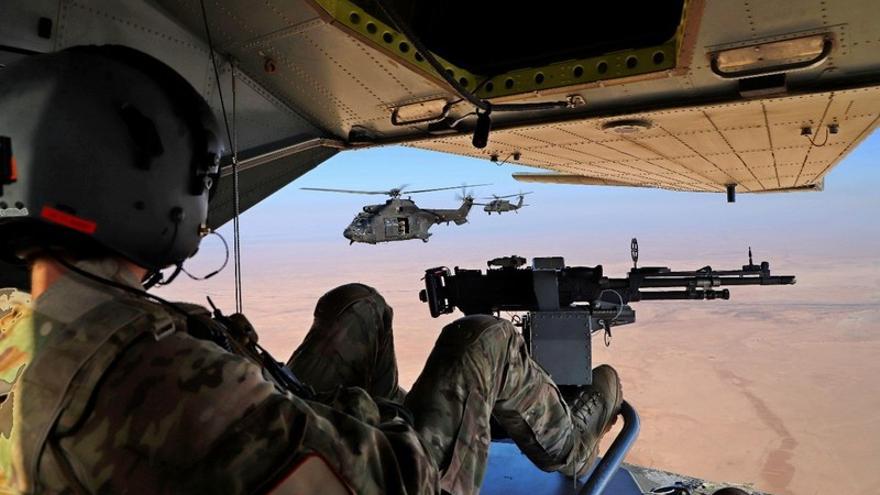
This week the Army Aviation celebrates his Patron, Our Lady of the Angels with a military act at its main base in Colmenar Viejo (Madrid). Until there they will move the Chief of the Maneuvering Helicopter Battalion (BHELMA) number VI and his Chief Petty Officer to represent the helicopter unit located in Los Rodeos (Tenerife).
Like every year, representatives of all the helicopter units of our Army will meet next Thursday the 23rd at the Main Base of the Army Airmobile Forces (FAMET), where the representation of its furthest unit (the BHELMA VI) could not be missing. The creation of BHELMA VI dates back to 1986. April 26 of that year is considered the inaugural date when the first helicopters (six HR-15 BO-105) landed at the port of Santa Cruz aboard the Ciudad de Zaragoza ferry.
Initially, an old hangar of the Air Force was occupied in the Los Rodeos Barracks, next to the Tenerife North airport, to later (1993) occupy the newly created facilities closest to the airport runway. This Maneuver Helicopter Battalion fulfills its mission under the direct organizational dependence of the Canary Islands Command (MCANA), unlike the other five battalions that depend directly on the Chief General of the FAMET. This is so due to the geographical peculiarity that largely determines the use of this Battalion.
In any case, both the means and the crews are perfectly integrated into the whole of the Army Aviation (AVIET), sharing flight procedures and type missions.
So much so, that the BHELMA VI periodically participates in international missions in rotation with other units or contributes personnel and crews to enlist contingents; For example, last year it formed the core of ISPUHEL XVI in Iraq. Although, participation abroad dates back to the 1990s, a decade in which BHELMA VI crews and support personnel began to integrate into the different helicopter units generated by the FAMET with the maneuvering helicopter battalions of the Peninsula. ; fundamentally for the Spanish Helicopter Unit in Bosnia and Herzegovina (SPAHEL).
Finally, in 2004, BHELMA VI generates and prepares for the first time an entire helicopter unit for the C/S operation in Bosnia and Herzegovina (SPAHEL XX). Later in 2005, it generates and prepares a second unit for the same operation (SPAHEL XXII). Since then, the scenarios have multiplied: Lebanon, Afghanistan and Iraq, as has been mentioned. The capabilities of the helicopters make it possible to react quickly in an insular environment where a large part of the territory is difficult or slow to access by land.
Proof of this is the participation in the Balmis operation, deploying disinfection teams, or the most recent Cumbre Vieja operation, where authorities such as the President of the Government and other ministers were transported in flight conditions restricted to civil aviation; all this thanks to the filtering capabilities of the turbines and the flight experience of the crews in adverse conditions.
The BHELMA VI works daily and is instructed to make the best use of the HU-18 (AB-212) and the HU-21 (SuperPuma) in order to guarantee the fulfillment of all types of flight missions under the orders of the Command of Canary Islands and integrated with the rest of the units of the Archipelago, but also without forgetting the AVIET on which it depends as a helicopter unit and with which it celebrates its Patron Saint.
















